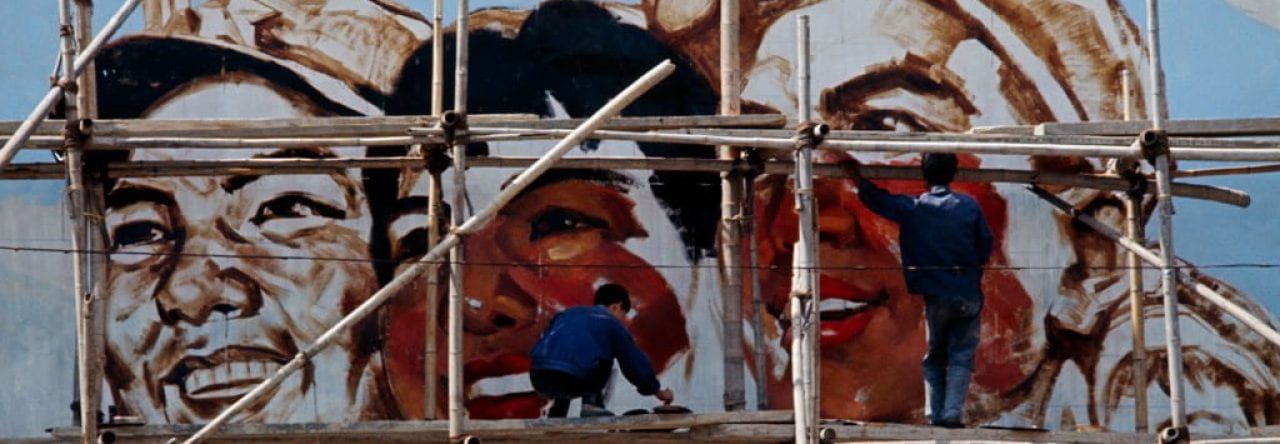While the various pieces of art by Yue Minjun all have different meanings and reference different important events throughout the artist’s life, all of his works have one thing in common, a smile. Any person drawn by Yue is shown as having that same signature grin which has far more meaning that it appears to have on the surface and Yue is not the first artist to even use this smile. Within China a new art movement had sprouted from the events that took place in Tiananmen Square in 1989, the cynical realism movement. Despite Yue consistently claiming his art was never a part of this movement it absolutely had a large influence on his style. Artists like Fang Lijun and Liu Wei also used this wide grin in their art as a way to criticize and rebel against the government. While each artist may use the smile for different purposes it is always at least meant to mock the government, after all, if they can’t fight back physically they can at least laugh at them. While this smile is used in all of his works, one of the most notable works of his would be Sea of the Brain (2001). This work depicts Yue with his head open and inside a body of water where Mao Zedong can be seen swimming. This is definitely a reference to when Mao went for a swim in the Yangtze River. The fact that it is within his head however could represent the oppressiveness of the government during the reign of Mao and how every aspect of everyone’s lives were controlled in order to fit Mao’s image for China. The grin on the person is a way to try and mock these efforts by laughing and smiling through them. Another thing to note is that the person depicted is clearly the artist himself which can mean that this is how he sees himself. While the influence of Mao was so intense it was reaching the brains of the people, he was simply laughing at it in defiance at how ridiculous this level of control was. This work is one of many that will be shown within the following exhibition with the focal point being the signature grin depicted in Yue’s many works. It will contain a series of both his paintings and his sculptures which are just as famous as the paintings.
Citations:
Cohen, Andrew. 2013. “YUE MINJUN.” ArtAsiaPacific, Jul, 104. https://libproxy.union.edu/login?url=https://www.proquest.com/magazines/yue-minjun/docview/1542882532/se-2.


Leave a Reply
You must be logged in to post a comment.